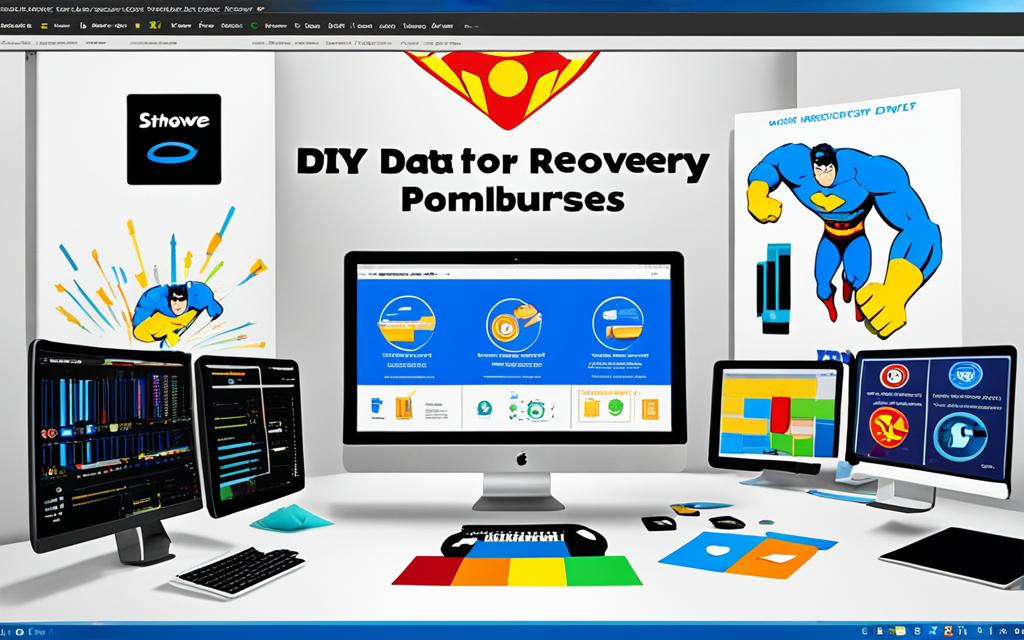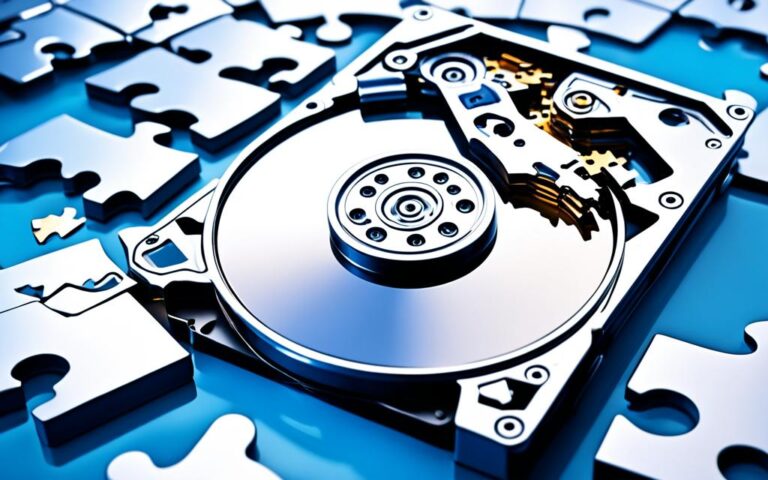The Role of Data Recovery Software: Pros and Cons
Data recovery software has become an essential tool in today’s digital age. Whether it’s accidental deletions, hardware failures, or software glitches, data loss can happen to anyone. That’s where data recovery software steps in, offering a potential lifeline to retrieve valuable information. However, before diving into the world of data recovery software, it’s crucial to understand the pros and cons it brings along.
When it comes to the pros, data recovery software brings several advantages. Firstly, it provides an affordable solution for retrieving lost or corrupted data. Instead of relying on costly professional services, individuals and businesses can opt for do-it-yourself (DIY) data recovery software. This option not only saves money but also allows for faster turnaround times, as users can initiate the recovery process immediately.
Another benefit of DIY data recovery software is its convenience. With user-friendly interfaces and step-by-step instructions, even those without technical expertise can navigate through the recovery process. This accessibility empowers individuals to take control of their data recovery without relying on external assistance.
However, like any solution, data recovery software also has its downsides. Novices or those unfamiliar with data recovery techniques may find DIY software challenging to use effectively. Without a solid understanding of the recovery process, there is a risk of further damage to the device or permanent loss of data.
Additionally, it’s important to note that data recovery software is not foolproof. It may not be effective in cases where the storage device has suffered physical damage, such as a malfunctioning hard drive. Moreover, using data recovery software does not guarantee the recovery of all lost data. Some files may be irretrievable due to various factors.
So, while data recovery software offers an affordable and convenient approach to recovering lost data, it’s essential to weigh the pros and cons before making a decision. Understanding the limitations and potential risks involved can help users make an informed choice based on their specific data recovery needs.
Advantages of DIY Data Recovery Software
When it comes to data recovery, DIY data recovery software offers a number of advantages that make it a compelling choice for many users.
- Affordability: One of the key advantages of DIY data recovery software is its cost-effectiveness. Compared to professional data recovery services, DIY software is significantly cheaper, making it a more economical option, especially for individuals and small businesses on a tight budget.
- Speed: DIY data recovery software allows users to retrieve their lost data within minutes. This is particularly valuable when time is of the essence and quick access to vital information is critical to business operations or personal needs.
- Convenience: Another advantage of DIY data recovery software is its user-friendly nature. With basic knowledge of data recovery, users can easily run the software on their own without the need for external help, providing a convenient solution for those who prefer self-reliance and independence.
By taking advantage of these benefits, users can quickly and cost-effectively recover their valuable data without relying on expensive professional services.
“DIY data recovery software offers affordability, speed, and convenience, allowing users to recover their lost data quickly and independently.”
| Advantages of DIY Data Recovery Software |
|---|
| Affordability |
| Speed |
| Convenience |
Disadvantages of DIY Data Recovery Software
While DIY data recovery software has its advantages, it also comes with several disadvantages. Firstly, it is not suitable for novices or individuals who lack basic knowledge of data recovery. Performing DIY data recovery requires some technical skills and understanding of the recovery process. Without proper expertise, there is a higher risk of making mistakes that can further complicate the recovery process.
Secondly, there is a risk of permanent data loss if mistakes or wrong operations are made during the recovery process. DIY data recovery software operates on the principle of trial and error, and if incorrect actions are taken, it can lead to irreparable damage to the data and even the device itself.
Thirdly, DIY data recovery software is ineffective in cases of physical damage to the hard drive. If the issue lies within the hardware itself, such as a malfunctioning drive or a mechanical failure, software-based solutions will not be able to resolve the problem.
Additionally, it is crucial to recognize that using DIY data recovery software does not guarantee success. Data recovery can be a complex and unpredictable process, and there are situations where recovery may not be possible, regardless of the software used.
It is important to weigh these factors carefully when considering the use of DIY data recovery software. Novices and those without technical expertise may be better off seeking professional assistance to minimize the risk of further data loss or damage.
Advantages of Paid Data Recovery Software
Paid data recovery software offers several advantages over DIY options. Firstly, it often includes more advanced features that allow for the recovery of a wider range of file types and data. This can be especially important when dealing with complex data loss scenarios. Secondly, paid software usually provides customer support, which can be valuable in troubleshooting issues and getting expert guidance during the recovery process.
Thirdly, paid data recovery software tends to be more secure and reliable compared to free options. It is developed by reputable companies that prioritize security and user privacy, reducing the risk of malware or other security threats.
Comparison: Features of Paid and Free Data Recovery Software
| Features | Paid Data Recovery Software | Free Data Recovery Software |
|---|---|---|
| Advanced File Recovery | ✅ | ❌ |
| Customer Support | ✅ | ❌ |
| Security and Privacy | ✅ | ❌ |
| Compatibility with Complex Data Loss Scenarios | ✅ | ❌ |
Paid data recovery software offers a range of features that are unavailable in free options. This includes advanced file recovery capabilities, customer support for expert guidance, and enhanced security and privacy measures. Additionally, paid software is designed to handle complex data loss scenarios, making it a more reliable choice for critical data recovery needs.
Overall, paid data recovery software provides a comprehensive and secure solution for recovering lost or corrupted data. The advanced features, customer support, and enhanced security make it a worthwhile investment, especially for individuals or businesses with critical data recovery requirements.
Disadvantages of Paid Data Recovery Software
Despite its advantages, paid data recovery software also comes with certain disadvantages that users should consider before making a purchase. Understanding these drawbacks can help individuals and businesses make an informed decision about whether paid data recovery software is the right choice for their needs.
1. Cost can be a barrier
One of the primary disadvantages of paid data recovery software is the cost associated with it. While free or lower-cost options may be available, paid software often requires a significant investment, especially if multiple devices or storage media need to be recovered.
For individuals or small businesses with limited budgets, the expense of paid software may be a barrier, making it difficult to justify the cost for data recovery purposes alone.
2. Technical expertise required
Another potential disadvantage of paid data recovery software is that it may require technical skills and knowledge to effectively use. Some programs can be complex, requiring additional training or the assistance of a professional technician.
Without the necessary expertise, users may struggle to navigate the software and optimize its features, leading to suboptimal results or even further damage to the data.
3. Limitations and restrictions
Some paid data recovery software may have limitations or restrictions that can restrict its usefulness. For example, certain software may impose time limitations on data recovery or impose restrictions on the number or size of files that can be recovered.
It is crucial to carefully review and understand the specific features and limitations of the software before making a purchase to ensure it aligns with your data recovery needs.
“The cost of paid data recovery software may deter individuals or small businesses with limited budgets.”
Overall, while paid data recovery software offers advanced features and additional support compared to free options, it is important to consider the potential drawbacks such as cost, technical expertise requirements, and limitations before making a decision. Understanding these disadvantages can help users make an informed choice and ensure that the chosen software meets their specific data recovery requirements.
| Disadvantages of Paid Data Recovery Software |
|---|
| 1. Cost can be a barrier |
| 2. Technical expertise required |
| 3. Limitations and restrictions |
Conclusion
In conclusion, data recovery software provides a valuable solution for recovering lost or corrupted data. Whether choosing DIY or paid options, it is important to weigh the pros and cons.
DIY data recovery software is affordable, fast, and convenient, but may not be suitable for novices and carries the risk of permanent data loss.
Paid data recovery software offers more advanced features, customer support, and better security, but can be expensive and require technical expertise. Ultimately, the choice depends on individual needs, budget, and the specific data recovery scenario.
It is always recommended to prioritize security, user privacy, and regular data backups to minimize the risk of data loss in the first place.












